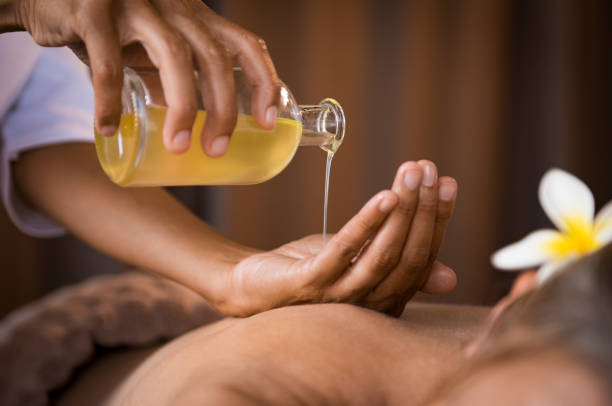The Science of Abrasives: How Particle Size Affects Skin Removal
Abrasive tools and products remove dead skin through mechanical action, but the particle size of the abrasive matters for effectiveness, comfort, and safety. Understanding how coarse, medium, and fine particles interact with the skin helps users, instructors, and healthcare professionals choose appropriate approaches for different parts of the body and varying skin conditions.

Abrasives remove layers of stratum corneum by mechanical friction; particle size determines how aggressively material is taken away, how the skin heals afterward, and what risks are present. Smaller particles tend to polish and remove microscopic debris, while larger particles abrade visible callus or thicker, rough skin. This balance influences outcomes for foot care, body shaping preparations, and maintenance routines that people perform at home or seek from local services. Different skin areas, underlying muscle or connective tissues, and factors like oil balance, hormones, and vitamins also modulate the skin’s response to abrasive treatment.
This article is for informational purposes only and should not be considered medical advice. Please consult a qualified healthcare professional for personalized guidance and treatment.
How does particle size affect the body?
Particle size alters the mechanical interaction with skin layers. Coarse particles (often found in pumice or industrial abrasives) remove thicker, tougher tissue effectively but increase the chance of microtears and transient pain. Fine particles (as in microcrystalline scrubs or certain laboratory-grade powders) create a polishing effect that reduces superficial flaking and improves skin texture without large-scale removal. For the body and especially for areas that undergo regular workout or friction, selecting the right particle size reduces irritation and supports recovery; for example, softer skin on the ankle reacts differently than the heel or thicker plantar skin. Consideration of skin hydration, oil content, and any underlying medical treatment or dermatologic conditions is essential before using abrasive products.
What do laboratory studies reveal?
Research in controlled laboratory settings measures abrasion outcomes by particle shape, hardness, and size distribution. Spherical microbeads, angular mineral grains, and synthetic polymers each produce distinct abrasion patterns in tissue models and ex vivo skin. Laboratory research also highlights that repeated mild abrasion can stimulate turnover and epidermal thickening in some cases, while aggressive abrasion may trigger inflammatory pathways that increase pain or delay healing. These findings inform product development and clinical protocols and are useful for instructors training community workshops or clinicians who recommend combined approaches, such as pairing exfoliation with topical treatments or post-procedure vitamin-enriched care.
How do hormones influence skin response?
Hormonal fluctuations affect skin thickness, oil production, and healing capacity, which in turn influence how abrasives perform. For example, shifts in sex hormones and stress-related hormones can change sebum output, altering how particles interact with the skin surface and potentially affecting grip or friction during an abrasive treatment. People on certain medical treatments or those taking vitamin supplements may notice different sensitivity levels; muscle recovery routines and workout frequency can also change how resilient skin feels. When planning exfoliation, consider recent medications, topical oils or homemade scrubs, and the broader wellness context including meditation or stress management that can affect skin health.
How do lasers and medical treatment compare?
Laser resurfacing and medical treatment approaches remove tissue using thermal or photomechanical energy rather than mechanical particles. Lasers can target specific layers with controlled depth, offering predictable removal for body shaping or scar revision, but they carry different risks and require trained clinicians. Abrasives remain valuable for routine maintenance, cost-effective callus reduction, and preparatory steps before medical treatment. Combining modalities—gentle abrasive exfoliation followed by professional laser or a clinician-led medical treatment—should be coordinated by a qualified practitioner to prevent overlapping injury and to optimize recovery, especially in areas with thin skin or recent trauma.
How to manage pain, relaxation, and recovery?
Effective abrasion protocols include attention to pain control, relaxation, and recovery. Techniques like gradual pressure, proper lubrication with suitable oils, and pacing can reduce pain during the procedure. Post-treatment, practices such as cool compresses, topical barrier-forming oils, and rest for the affected area help the recovery process; meditation and mental relaxation techniques may reduce perceived discomfort. For instructors or community groups teaching homemade scrub recipes—sometimes including gentle exfoliants or flower-derived oils—emphasize gentle particle sizes and patch testing. Muscle soreness from workouts and local inflammation can compound sensitivity, so plan abrasive sessions away from intense exercise or immediately after heavy training.
Implications for body shaping and community wellness
For body shaping preparations and ongoing wellness routines, understanding particle size supports safer protocols. Fine abrasives can smooth skin prior to topical treatments or aesthetic procedures, while coarser options address stubborn callus when used carefully. Community education—through qualified instructors or local services—helps people choose appropriate products, avoid DIY mixtures that are too abrasive, and know when to seek medical treatment. Research-informed practice, attention to vitamins and nutrition that support skin repair, and coordination with healthcare providers improves outcomes. If seeking services in your area, look for providers who explain particle profiles, use evidence-based products, and align treatments with broader wellness plans.
Conclusion
Particle size is a fundamental variable in the science of abrasives: it determines how much tissue is removed, the likelihood of irritation or pain, and the appropriate contexts for use. Laboratory research and clinical experience both support thoughtful selection based on skin type, underlying health factors such as hormones and vitamins, and the intended outcome—whether routine maintenance, preparation for medical treatment, or part of a broader body shaping and wellness regimen. Educated choices and collaboration with trained providers or medical professionals help balance effectiveness and safety.





